The underwaterworld of Bocas del Toro can be beautiful. We found it in the remote areas, far away from the sewers and the sunscreens of the resorts and the towns.
Click the film and enjoy the beauty of nature!
The underwaterworld of Bocas del Toro can be beautiful. We found it in the remote areas, far away from the sewers and the sunscreens of the resorts and the towns.
Click the film and enjoy the beauty of nature!
Isabelle, the medicine woman from San Cristobal, and Mathilde (Darkland Foundation), know everything about the medicinal power of the jungle plants. During a 2 hours hike, they show us at least 10 plants that can keep you out of hospital. This knowledge goes down generations of the Ngobe tribe. Again, we learn from their respect in working with nature, using only what you need.
This was the second blog on our visit to San Cristobal. You can also read the article on making jungle bags (from dyeing the plants to crochet).
Do you have any comments or do you want more information? Or ypu want to sail with us? We welcome your email at info@fossilfreearoundtheworld.org
The dentist couple Marc and Angie joined the Floating Doctors organization, to serve the Ngabe-Bugle indigenous community with dental care.
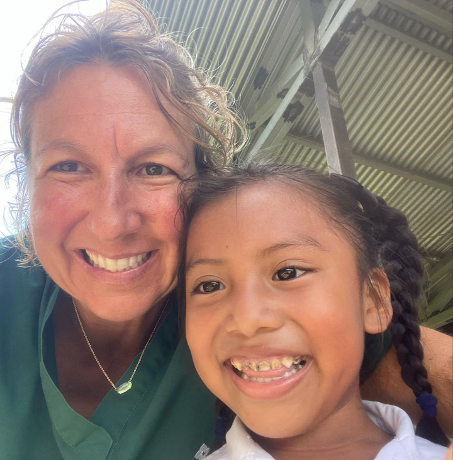
In the past few months, they have treated patients in the most remote areas of the archipelago of Bocas del Toro.
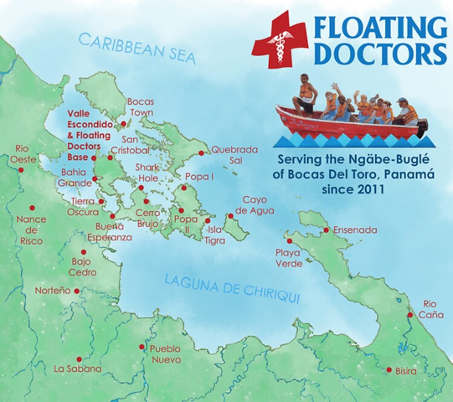
Marc and Angie’s motivation is to help the community lead a healthier life. Healthy teeth are essential for that. According to Marc, the teeth of the Ngabe-Bugle are the most beautiful on earth. Strong and straight, and all teeth regular, well rooted, and beautifully placed.
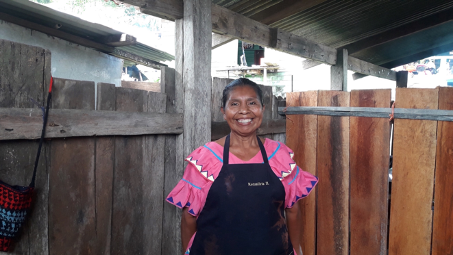
But now, he often has to pull the teeth that could have been so perfect. Some of their patients are as young as 12 and Marc has to pull 6 teeth because they are rotted to the bone. So sad!
Angie: “Since the diet of the indigenous changed from natural to industrial, things went wrong. Sodas, sweets and chips came in, but not the toothbrush and dental care that have to come with them.“


Marc says: “they simply don’t know that Cola is bad, that sugar is bad. Some mothers even think that Coke is good, and you see even babies drinking that stuff. At fifteen, they have a sugar addiction, and… no tooth left.”
Everything starts with good information. And there is a lot to win, because there is a lot of teeth to save.
F
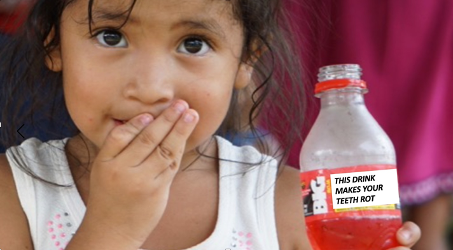
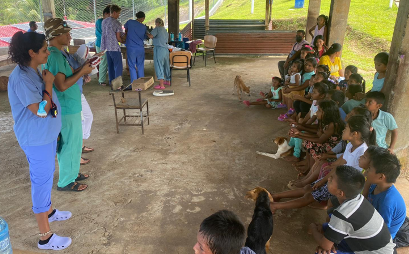
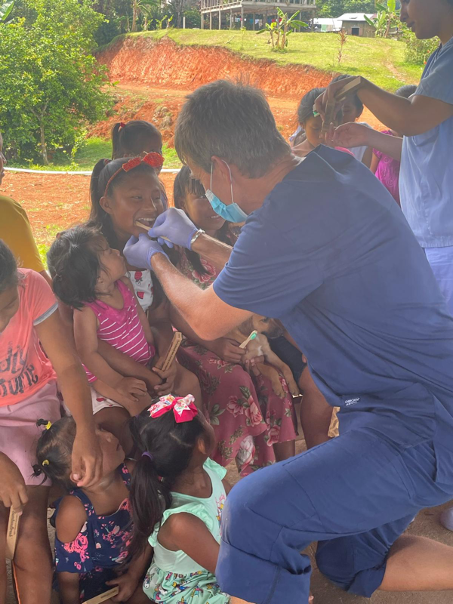
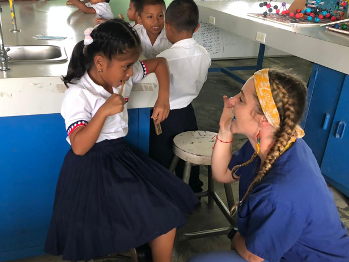
Angie and Marc are floating doctors now for 4 months. The complete organization runs on volunteers. And it is amazing what they do.
Angie: “The work is so rewarding. You can make so much a difference, for mothers, for the children.” But it is not easy.
There is a base camp, but there are no roads here. Sometimes they sail with their boat to the villages and go on anchor there. The rest of the way they do by motorboat and they walk to the village with their equipment.
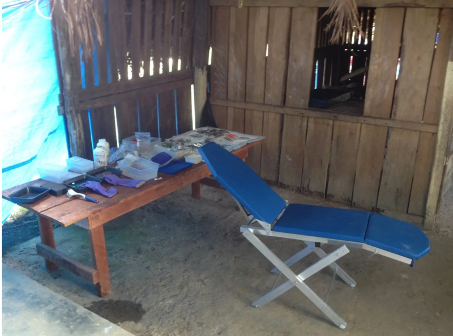
“The tools are limited. There is no suction. We work with “mineworker-lamps” on our heads. You do your utmost on hygiene, but an indigenous hut remains an indigenous hut. And, you have a big number of patients to treat.” It requires every bit of creativity.
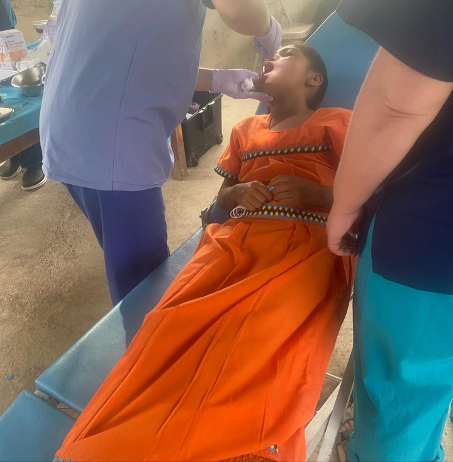
They discovered a fluid that kills the bacteria’s in little holes and forms a strong, protective layer. It was successful a century ago in dental care, but now it is a forgotten product.
“It costs next to nothing, and it is a great alternative for a filling for these young kids teeth.”
Pulling a tooth that is rotten to the bone, requires special tools a modern Western dentist practice has, but Marc has not. “A colleague discovered a surgery tool for fixing and opening sinuses. You can beautifully go along the root with it, without any violence, and then simply lift the remaining piece of the tooth with root and all. It is not in the dentists’ handbook, but it is simple, it works subtle, and I love that.”
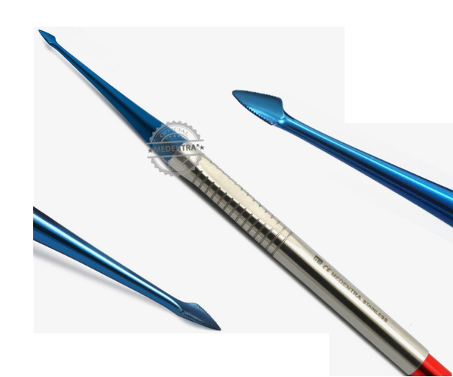
And there are stories of hope. A young indigenous lady who escorted her brother to the dentist, assisted Marc because they were short of staff that day. She proved to be a natural talent, so Marc encouraged her to become a dental worker herself. That’s empowerment.
Now here’s today’s key question: do you know a capable dentist who can take over Marc and Angie’s place from October? Or would you know of any daring ‘dental’ volunteers who are willing to dedicate their holidays or study time to this great community?
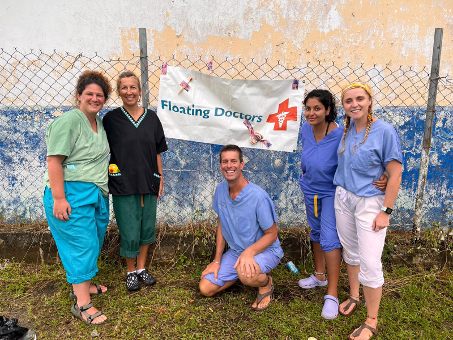
It is super rewarding work for an amazing indigenous community in a paradise-like setting. You think we are exaggerating? Nope. We’ve been there.
Interested? Please contact Floating dentists on info@FloatingDoctors.com or visit their site.
Like to sail with us? please contact info@fossilfreearoundtheworld.org
With a big machete, Isabelle, the medicine woman from San Cristobal, cuts down an agave. And also, plants for dyeing. We take them with us. A few hours later, we know how to make a jungle bag. This knowledge goes down generations of indigenous women of the Ngobe tribe. We learn from their respect in working with nature, using only what you need.
Comments? Questions? Please contact us at info@fossilfreearoundtheworld.org
A dock with some kayaks and SUP-boards, a leaf covered hut with a small cocktail bar, and from there a path meandering uphill a garden, between trees, flowers and plants, a yellow hermit crawling away, it is like walking through the Garden of Eden. We end up at a two-store mansion with a nicely decorated porch. There we meet Brian and his partner Amy. They run Dolphin Bay Hideaway, and even in the low season they continuously have guests. Brian gives us coffee at the big wooden table, with the view at the plants and flowers, butterflies, hummingbirds, a black-and-green spotted frog, and at the very end a view to the bay. You feel all over that the Hideway hotel is run sustainably and makes the next generation happy.
But that is just part of their secret.
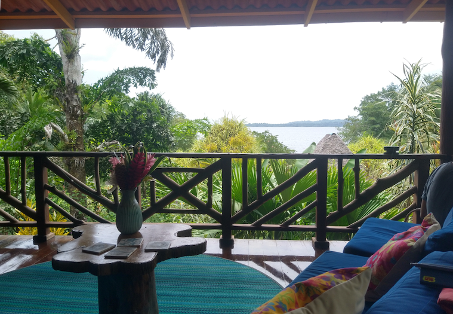
As fossil fuel free sailors, we first ask how they generate their energy. Like we saw on Solarte, also the island San Cristobal doesn’t have electricity. Brian says: “The choice for solar is obvious for us, although the investment is big.”
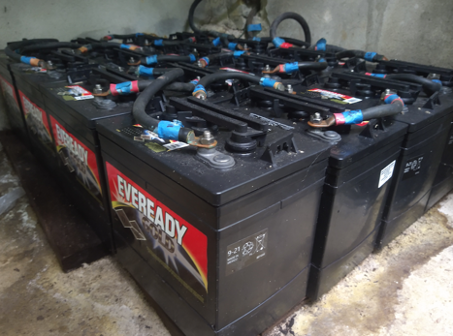
But they can supply mainly on solar power, because the hotel makes the guest use only what they need. Do the guests need airco? No, that would keep them inside, instead of closer to nature. So, they use ventilators to keep the pleasant atmosphere, in the rooms and on the porch, the gym or where ever.
Also, they see a growing number of vegetarians under the European teenagers. Eating too much meat is also an issue in climate change. So, their kitchen has adjusted to that, serving many attractive vegetarian dishes, and using local ingredients.
The hotel is also self-sufficient on water. The rain water from the roof is caught into big tanks. So, we ask if the hotel has enough in storage to buffer the drier seasons. We tell him that a Dutch household takes 130 liters per person per day. Brian answers: “Well, the average water consumption of an American USA citizen is a staggering 320 liters per person per day.” OK, now there is no lawn to spray or a car to wash, but still, they consume a lot.”
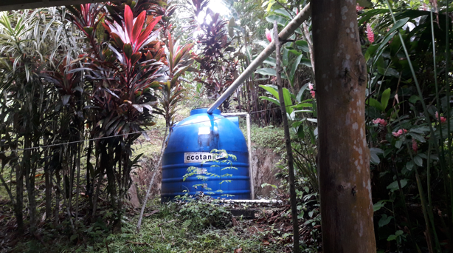
Brian continues: “I always monitor the water usage, and I need to. When American teenagers come to the hotel, wechallenge them to limit the number of showers required each day. At first this is an effort for them, but with some explanation, they are motivated to adjust their behavior, and quickly get used to it. Then they celebrate their vacation with the same joy.”
There are few and unenforced local laws regarding sewage systems, but on the hotel they use septic systems. When the tank is full, its contents are brought to a little land to fertilize the soil. It is now named ‘poopy field’ and everything grows super! This is the perfect solution for a scarcely populated area; the land benefits and no black water is flushed into the valued Dolphin Bay.
Brian and Amy’s driving force to start this hotel, is in one word: nature. You recognize their love immediately in everything. The beauty of the garden, and in all details everywhere in the hotel. The way it is built, from the wooden floors, the furniture, the flowers in the vases on the porch, the little signs with the plant names in the garden.
We talked with some guests. They don’t care to spend some extra time and money to go off the beaten track, so to be sure to spend their precious vacation time in a nature environment.
Click here to get an impression of the plants in the garden.
The hotel is small, but the business runs well. But Brian and Amy also see their environment, the surroundings of the hotel, and that is challenging.
Brian explains: “Deforestation is a big and growing problem in Panama. The jungle forest is cut out to make way for cattle grazing, other agriculture or land development. For sure it is good if here and there a patch is cleared to keep some cattle, but that was in the past. Now the scale gets bigger. Many of the trees, with huge natural diversity, have a good value on the lumber market, for wood or charcoal. So, they are cut down. Now, on some islands, only five to ten species remain.”
Deforestation is a global environmental issue. But here it is also a nature issue. Many of these trees cut out, are typical for Panamas’ jungle. It is the diversity of nature involved here, the wealth of our earth.
“So, what we do with the acres we have, is reforesting it bit by bit. We plant that mix of species to restore the original forest. “

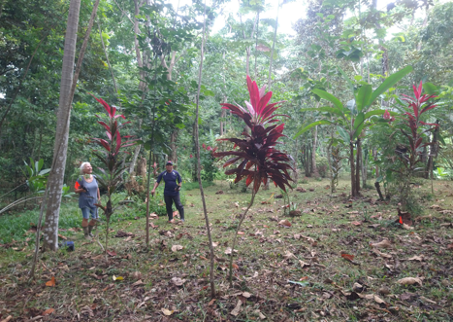
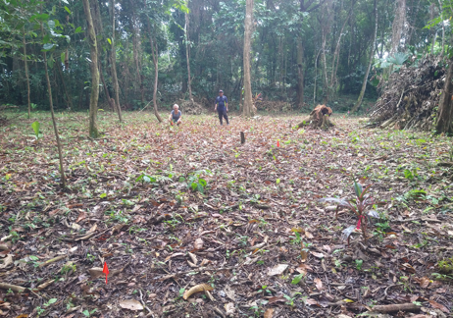
All this leads to a subtle but clear interaction. Many hotel guests see this work. They like it. They plant a tree. The Dolphin Bay Hideaway hotel is not only an ‘eco lodge’, but the guests also see that a part of their money goes into building nature again. This is no ‘green talk’, Brian plans to plant 1000 trees each year. So the reforestation is a continuous part of the business.
The Dolphin Bay Hideaway hotel is an example of how to run your top-notch hotel business sustainably, and to keep mother Earth in shape, in all her wealth, for our next generations.
Mike liked our boat, the whole concept of how we use the energy. So, we got talking and he told us about his work for his neighbours at Nancy Cay, Solarte Island. There is no electricity on the island, no roads, no piped water. It is totally off the grid, with only walking and boats for transportation. Imagine: when it’s dark, it’s dark.
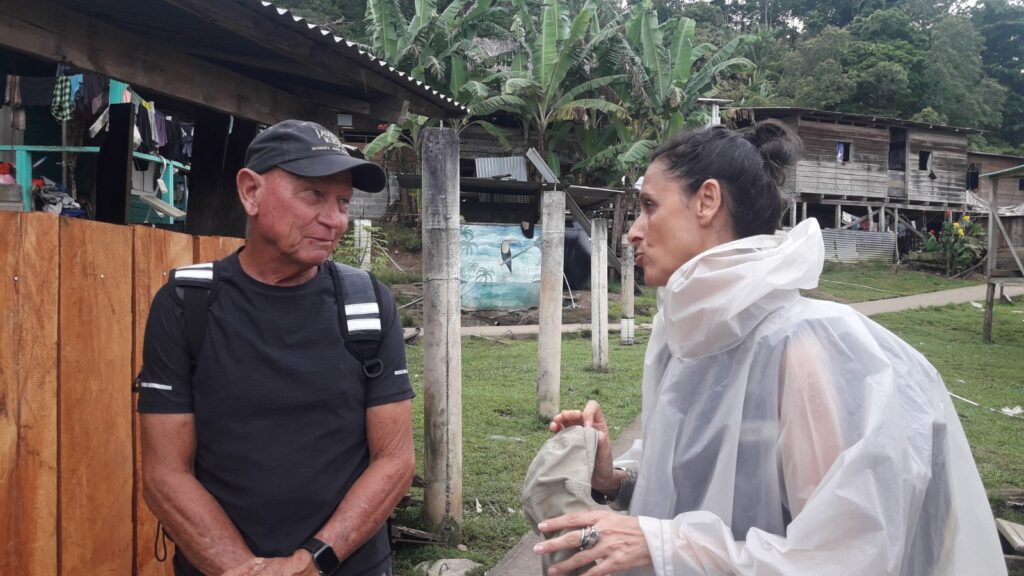
Mike’s goal is to get light to the houses of the indigenous people. Just two or three lights per house is enough. When they have that, they can read, sew, anything.

Mike started with the scraps he got from friends and fellow sailors. An old solar panel, an old battery from a sailboat. They had lost most of their capacity, but no worries, you only need a tiny bit of it for two or three lights.
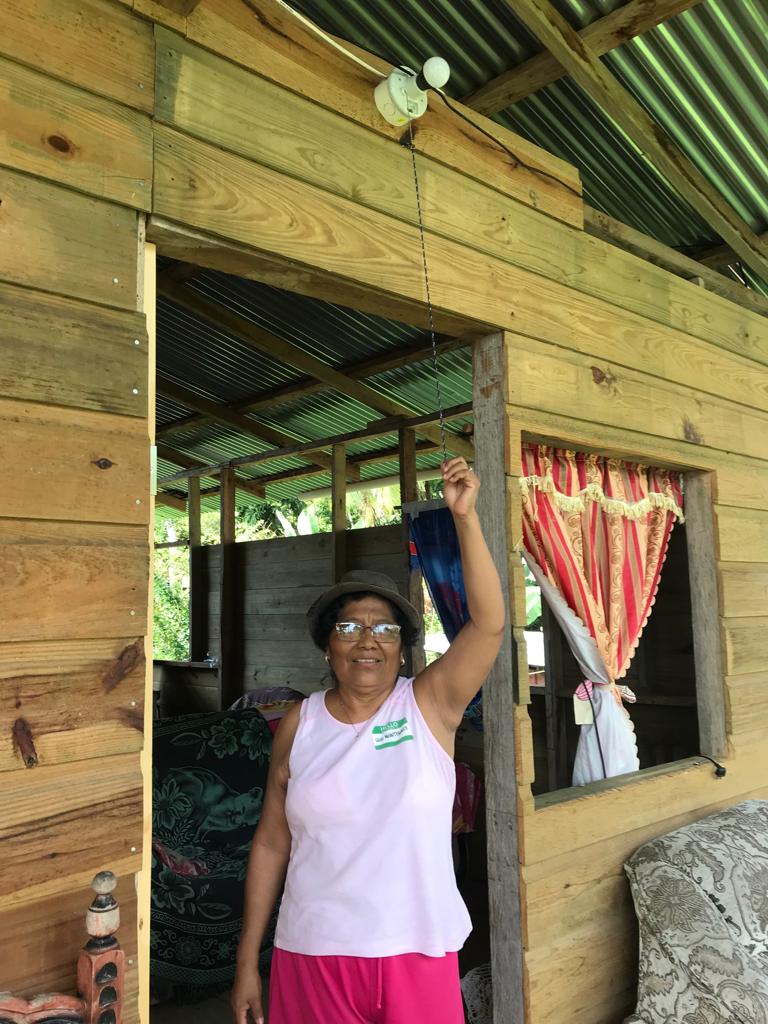
Mike recycles used batteries by equalization and testing; he changes ordinary converters to solar controllers. And, he tests them at home first.

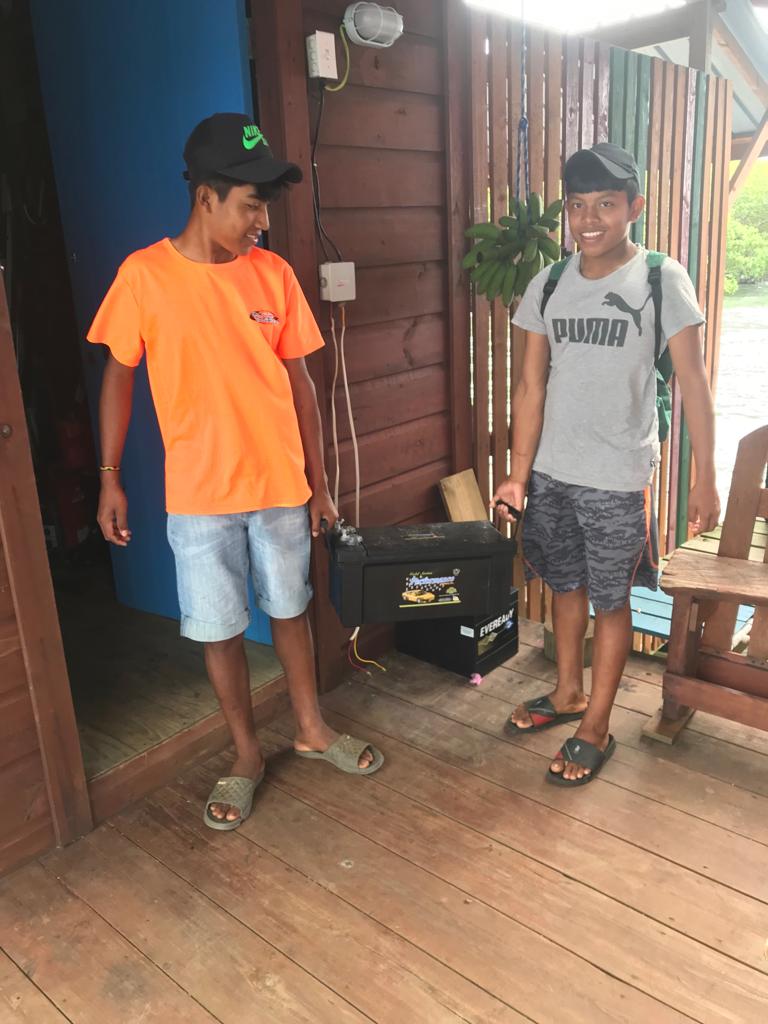


Until now, Mike has done the major part of the installations himself. However, he is now training one of the men on the island to be able to do this himself. This way, the community has the knowledge on solar systems in their own hands.
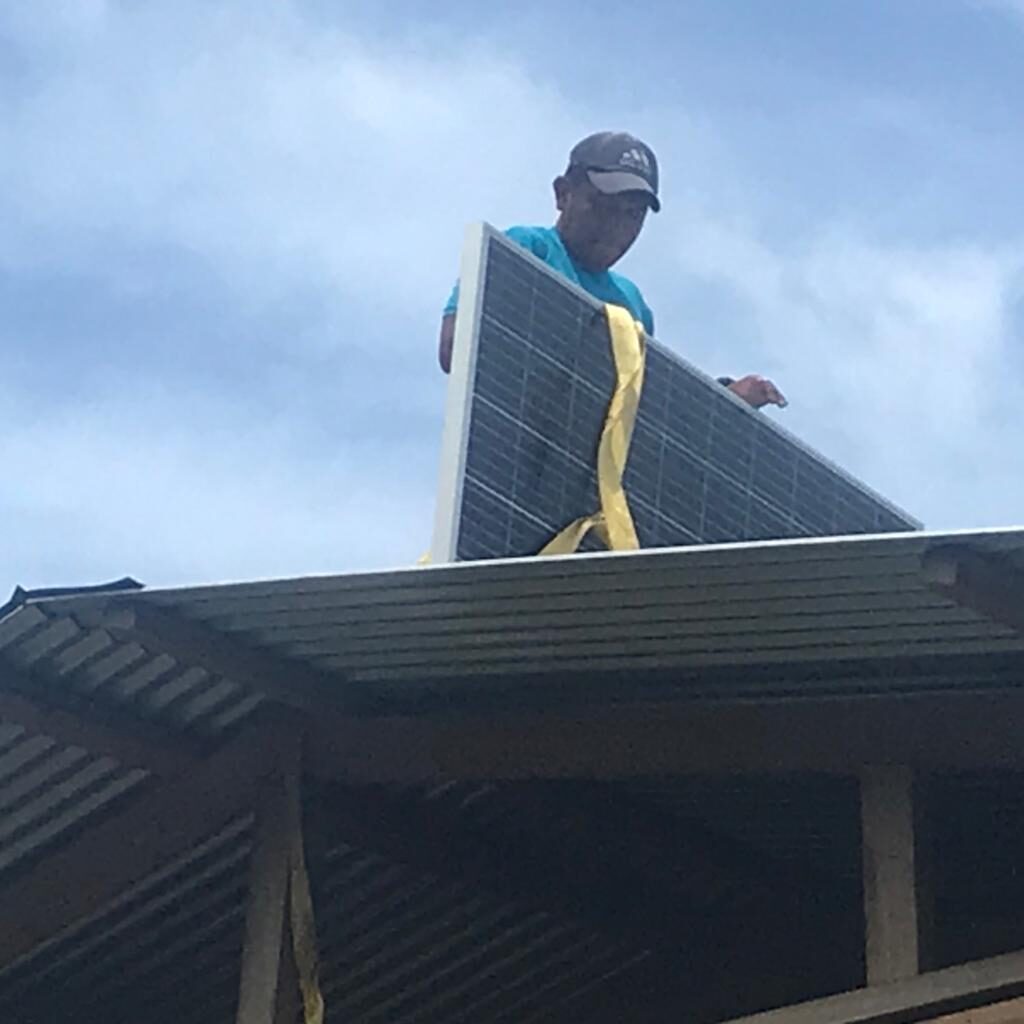
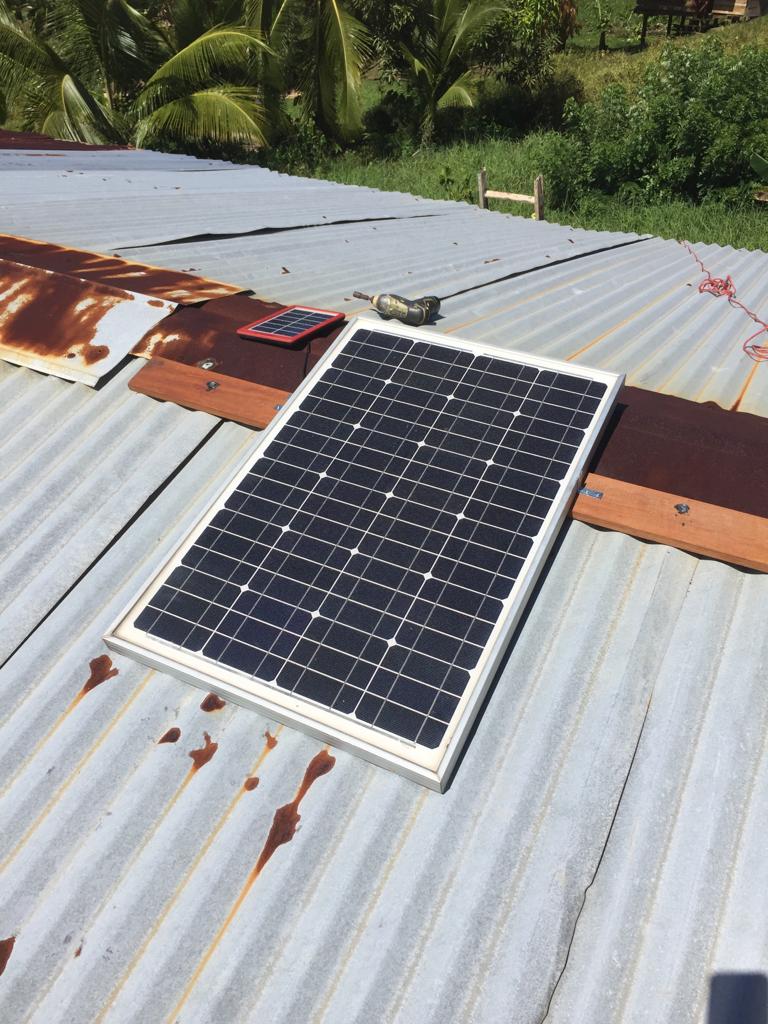
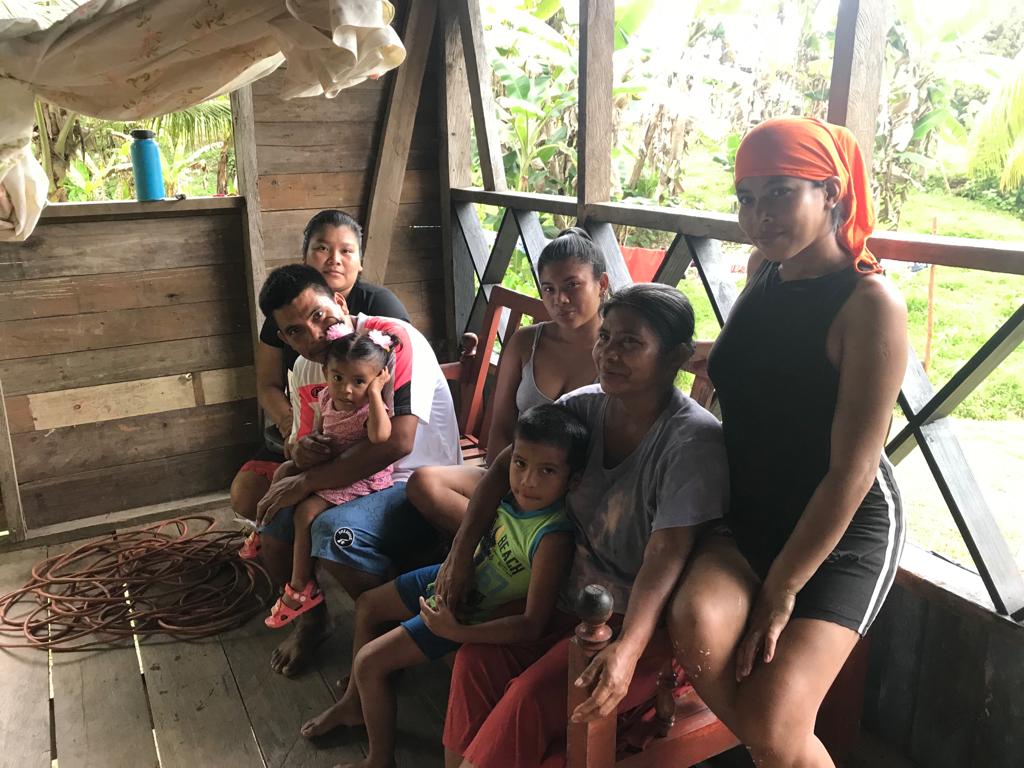
Mike counts his hours with the labour of love. He started with old panels and with scrap batteries from sailors. So it is only a converter (the box between the solar panel and the battery), the light and switch, and some wiring.
People who have work and can pay him back, do so, often in small deposits. But from young women already mother of one or more children, he does not want money.
A crowdfunding action among his old friends in California enabled him to establish a small fund, so it helps him not to skip poor families. And, this way he can buy the necessary equipment in larger quantities, so cheaper. And, his newest addition, he could get a batch of cheap tablets, which will definitely find their way to the younger indigenous people.

‘Do not curse the darkness, light a candle’. Mike does just that. We think Mike is a bright example of how you can respectfully make a difference for those around you.
In Groningen, a province in the very North of Holland, lies an enormous gas field, formed during some 50,000 years. In the last 50 years we already used 80% of it. Such big swallowing in so little time was too much for Mother Earth, so it resulted in several earthquakes and ground subsidence’s. This caused 11.000 sagging houses, with serious damage.

The owners have been protesting for decades. It seemed unrealistic that they would ever succeed. First, their houses are in the remotest area in the Netherlands, very far from the government in The Hague. Second, the exploration of the gas field is for 50% owned by the State, which brings in a load of money in the States purse. And last but not least, the other 50% is owned by Shell and Exxon, and they have a special place in the hearts of the neo-liberals who run the country last decade.
Now, what happens? If you write this in a book, the reader would not believe it. These remote 11.000 people managed to get it on the national political agenda. And keep it there. For years. Some 7 years ago, the government finally agreed to pay a part of their claims. And, the government agreed to squeeze the gas supply each year a bit more.
So now, Holland needs to buy gas abroad; until now this came from Russia. It is about 15% of the gas Holland uses.
Due to the conflict with Putin, Holland can expect a 15% shortage of gas. There are reserves to survive next winter, but from then on, a 15% reduction is necessary. As you know, on ‘Ya’ we reduced our energy use with about 80%. So, 15% should be a piece of cake. And indeed, the Dutch authority on gas, Dutch Association for Sustainable Energy, made a recommendation to reduce the use. A 15% reduction can easily be realized.
Guess what? Not! In Holland it is different. Perhaps the intimacy between our current government and the big energy companies stands in the way; however, the use and exploration of fossil fuels continue to be stimulated. Two examples:
1. While all European countries have subsidies on house insulation, the Dutch government stalled hers till January ’22. The ministry now subsidizes house insulation to a maximum of only 30%, and under special conditions. For example in France, the government simply subsidizes 100% of every house insulation.
2. The Netherlands is a paradise for oil and gas companies. We pamper them. Holland is a tax haven for them, like Guernsey and the Cayman Islands. And, they get grants easily and under sweet conditions. Hence the fossil energy could stay cheaper than the renewable energy. (That is, until the Russians invaded Ukrain and the fossil fuels prices exploded).
So, forget the reduction. Not the boycott, not even the high prices for fossil fuel that result from Putin’s actions seem to be able make the Dutch government taking reduction actions.
So the Ministry of Energy goes for energy from somewhere.
this is a great opportunity to switch to more renewable energy, and wind farms can replace gas pretty well. Holland is pretty far behind in her planning on the energy transition. Time to make up the backlog.
But, the process to put a serious wind farm at sea, takes about two to three years of bureaucracy; the government is not able to speed that up. And, we need the energy within one year,. A politician can’t wait longer, he can not leave his voters in the cold.
So, forget the renewables too. Replacing the Russian gas must go faster.
Then, let’s see…. gas from somewhere else? The Dutch government has already sent people to check it out in Azerbeizjan, Uzbekistan and other Gas-in-stan countries. Good for gas instantly.
The great advantage is that, as soon as the contract is signed, it only takes a year for the first delivery. In that year they can build the infrastructure: pump stations, gas tanks, etcetera, perhaps even a harbor extension for the gas tankers.
This requires big investments, so such contracts are always for at least 20 years. And, of course, you agree on the price for the whole period.
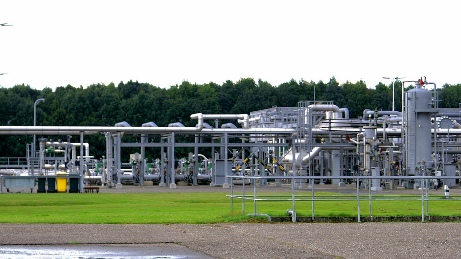
But, it can be done in a year. That’s a quick fix, and that’s what counts for any politician.
At any price?
We’re talking lots of money here.
Just to give an idea, already in April the Netherlands paid Russia 34 million per day, would be on annual basis more than 12 billion Euros. Meanwhile, the price of gas is about 20 times higher than it was before the Ukrain war.
Before we get dazzled, let us ask one of the world’s independent experts on gas and energy, Mr. R. Krupen. He is climate consultant to the United Nations and a former director of a multinational gas company. The inside knowledge with the outside perspective.
He says that any gas contract is extremely expensive now. No matter which Gasinstan country you deal with. Just the gas over a period of 20 years will cost Holland very very much, he doesnot dare to say.
“Problem is”, says Mr. Krupen, “we only need the gas for one or two extra years, because then the renewables like wind farms can take over. These renewables make much cheaper energy than that expensive gas. And we have to build them anyways, because we are far behind on our energy transition agreements.”
Let us make a defensive number, based on the Russian gas price Holland payed last April. Then, a Gasinstan contract for 20 years would cost us 250 billion Euros.
So, since we are not politically able to reduce 15%, the energy question boils down to this:
Are we actually willing to pay 250 million Euro, to get us through one or two winters?
There is an alternative.
Why don’t we open the valve of the North Holland gas field for one or two winters? This costs nearly nothing and you’re not nailed to any Gas-in-stan regime with a 250 million contract that you don’t want for the remaining 18-19 years.
But, what would the protests be of the people with the sagging houses? They will protest, go to court, and they will win. And, what would the voters think? Like: “you see, them damned politicians never keep their word.”
Again, some price tags. We have 250 million Euros in the pocket if we don’t book a Gasinstan contract.
The 11.000 houses now get a claim from the State. The State is not clear about that, but the grand total must be hundreds of millions.
This money is nothing in relation to the billions of a Gasinstan contract.
So, can we find a bigger number than 11,000 houses? The biggest to be found is from a research that the owners of the sagging houses ordered to do. The University of Groningen made an extensive survey, concluding that the value of 180,000 houses would have dropped in the Groningen area. This is a total value of nearly 1 billion.
Let us buy every owner out, and give away the tenfold of what they estimate. The price will be 10 billion.
Then, every owner can gold plate every piece of timber sustaining his house, and build a copy next to it. This could cover much of the smart and grieves of the many years.
We are unbelievably behind on our energy transition process. We need windfarms, and fast. There are 3,800 MegaWatt on wind farms at sea right now. This has cost the taxpayer 12,5 billion euros. Now, because the improved efficiency, scale factors and experience, it can be 70% cheaper, so 3,5 billion Euros). OK, as long as they build another 3800 MegaWatt in two years, we double it for them. That price is 7 billion.
Now the production. It costs 1 billion per year to get the gas from the Groningen gas field and put it in the infrastructure. It is relatively not much extra work to putting extra gas through the existing system. But the companies who do it are used to be pampered, and spoilt as they are, they require their share. So, they want a double price, 2 billion. Well, we double that. Makes 4 billion per year. We will do that for two years, so we give them 8 billion in total to open the valves for a higher throughput for these 2 years. It is also bounty money, a last premium, a fare well present before we go for the renewables.
All together, instead of contracting ‘Gasinstan’, we open our gas field and we play SantaClaus:
| We give away to | The give away | The price (Euro) |
| All house owners with a (potential) risk of devaluated house (est. 1 billion Euro) | 10 times the prize of their estimated devaluation | 10,000,000,000 |
| Windfarm builders | A double subsidy | 7,000,000,000 |
| The gas production companies (Shell and Exxon) | 2 times their estimated costs | 8,000,000,000 |
| Us | The left over | 225,000,000,000 |
| Total | 250,000,000,000 |
In a soap you would not believe all this, but here it is reality. A golden path to make up our backlog on the energy transition, and to keep our energy much, much cheaper.
Any opinion on it? please mail info@fossilfreearoundtheworld.org
Want to step on board and sail fossil free? mail info@fossilfreearondtheworld.org
Traveling slowly allows us to see some marvelous creatures of the land, the sea, and the water. There is still so much worth enjoying and cherishing. Look at these dragonflies; all pictures were taken on board of Ya.
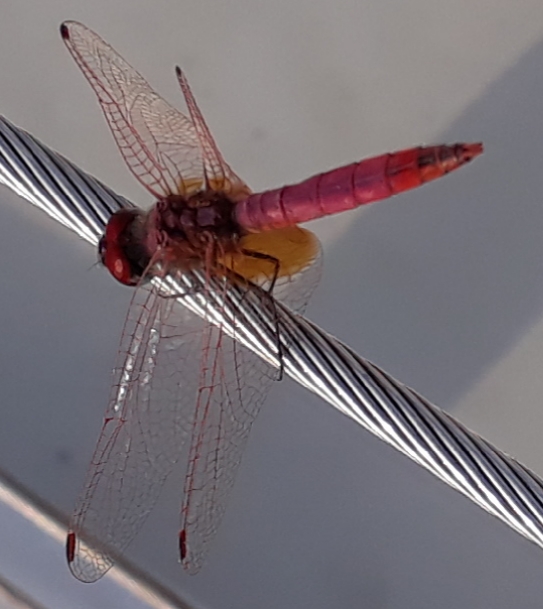
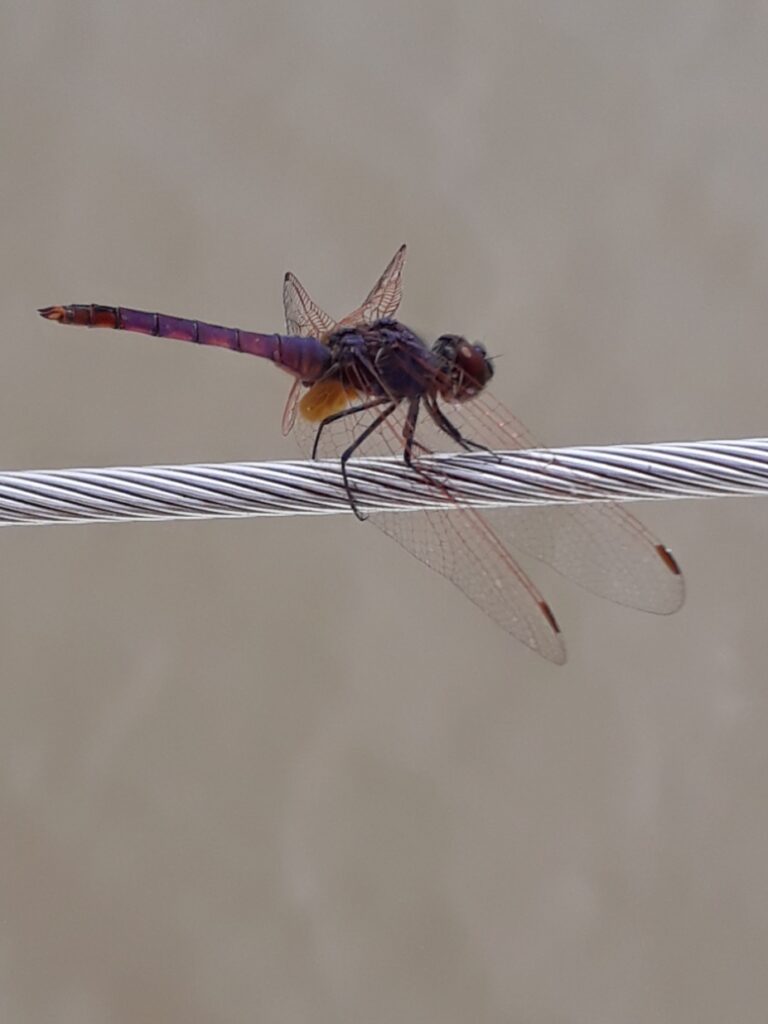


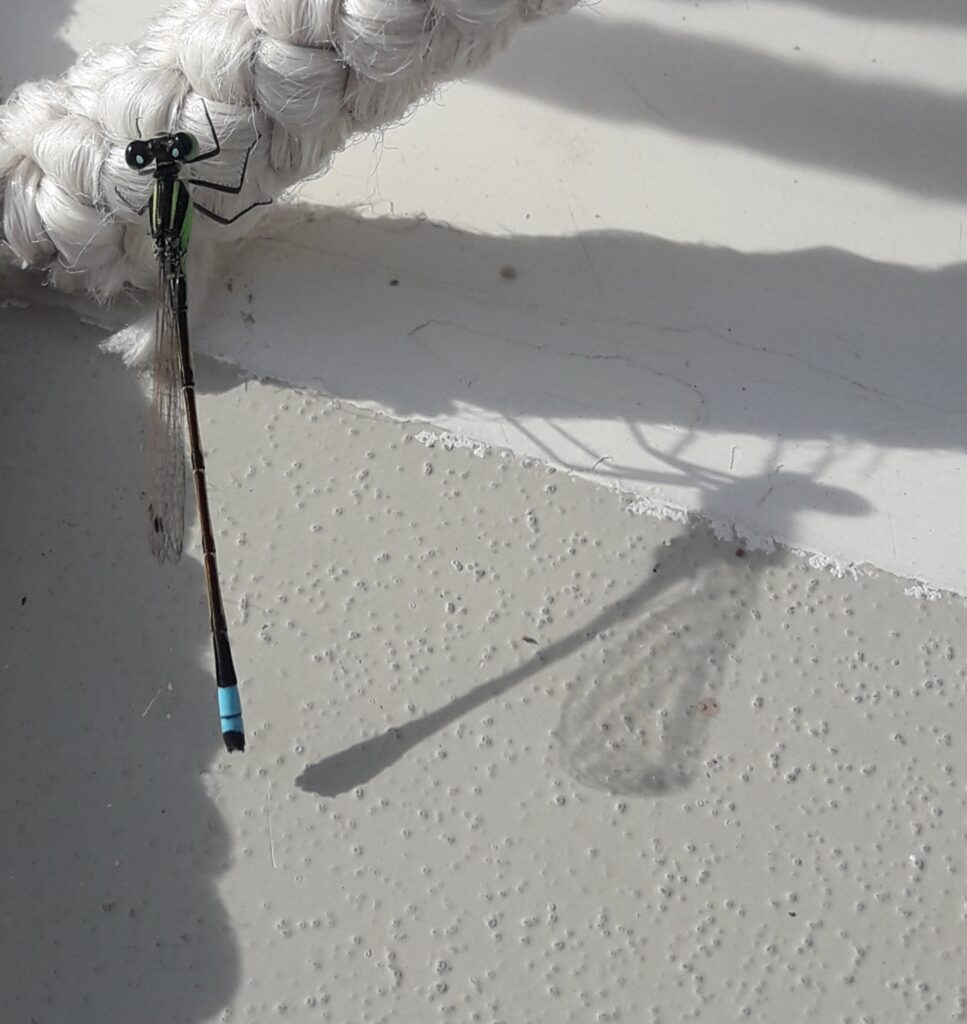
Some say it’s a good sign to see a dragonfly. So, we gladly share these pictures with you.
Want to react? Sail with us? mail us at info@fossilfreearoundtheworld.org
In Cartagena, we had our hull cleaned near to perfection by Pedro and Yair. Only three weeks later, in Bocas del Toro, we wanted to free our waterline from algae. We also checked the underwatership and found our hull covered in barnacles. Trouble in paradise?
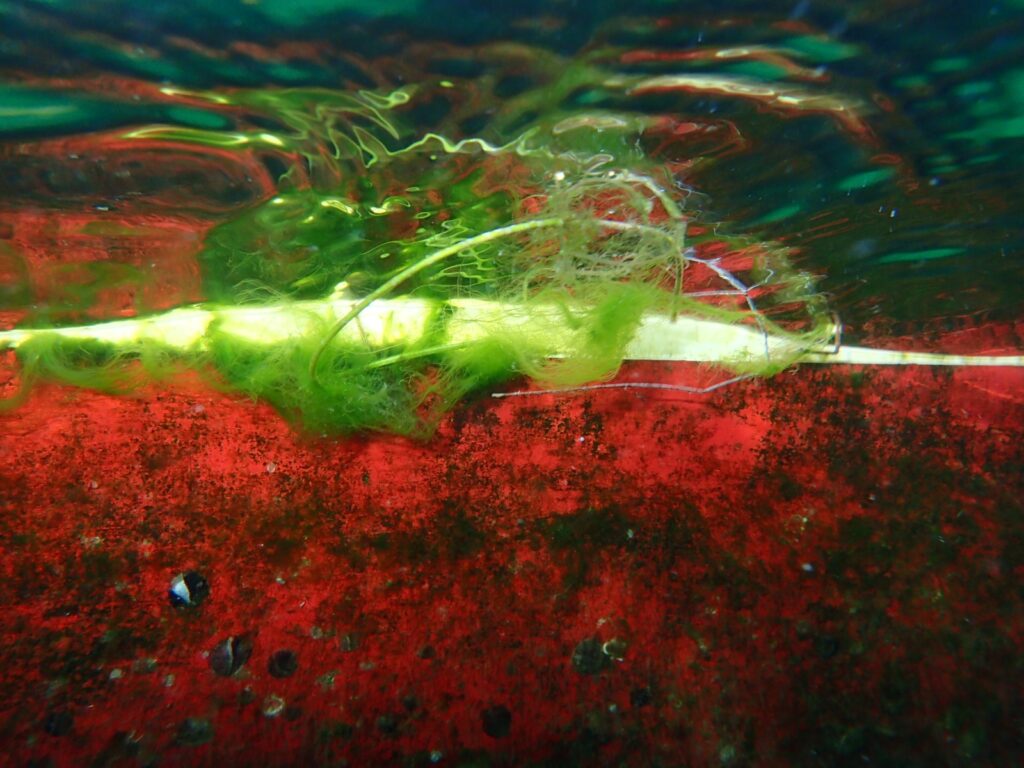

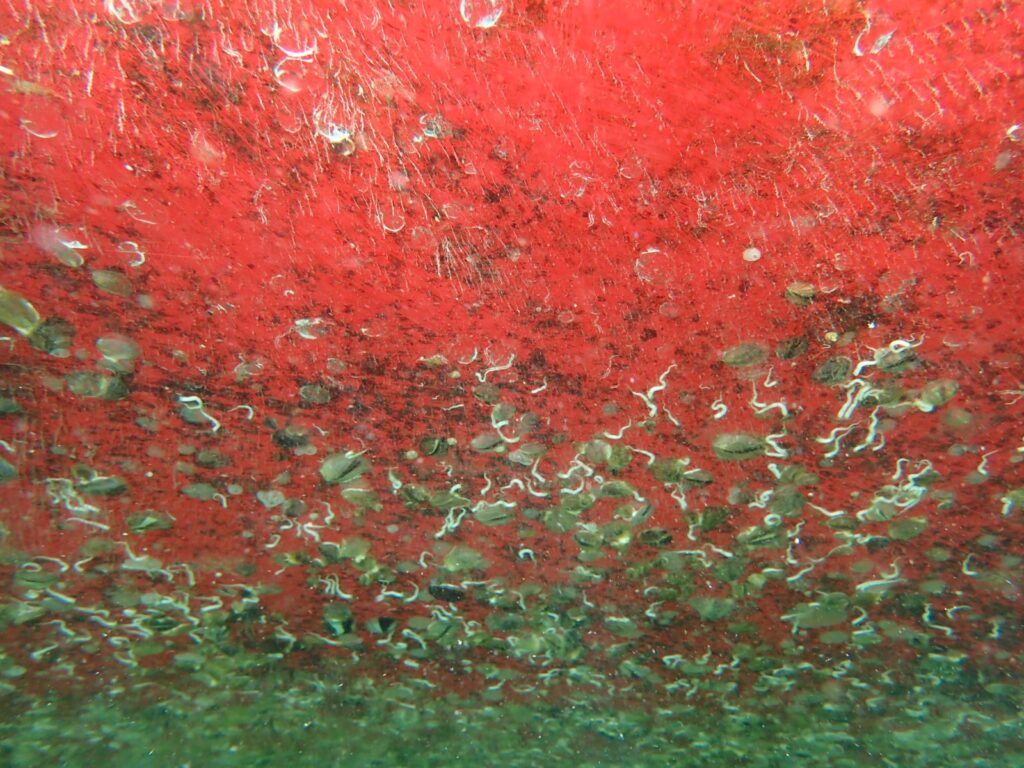
So, we started cleaning. The fish adored our work, and that kept us going.
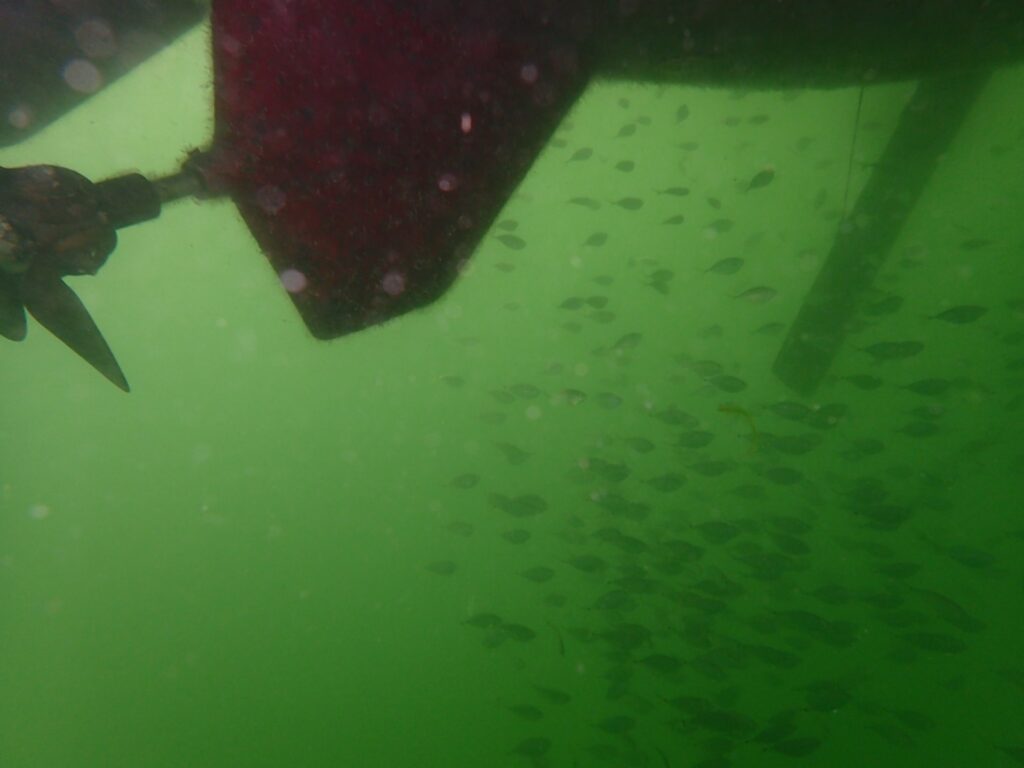
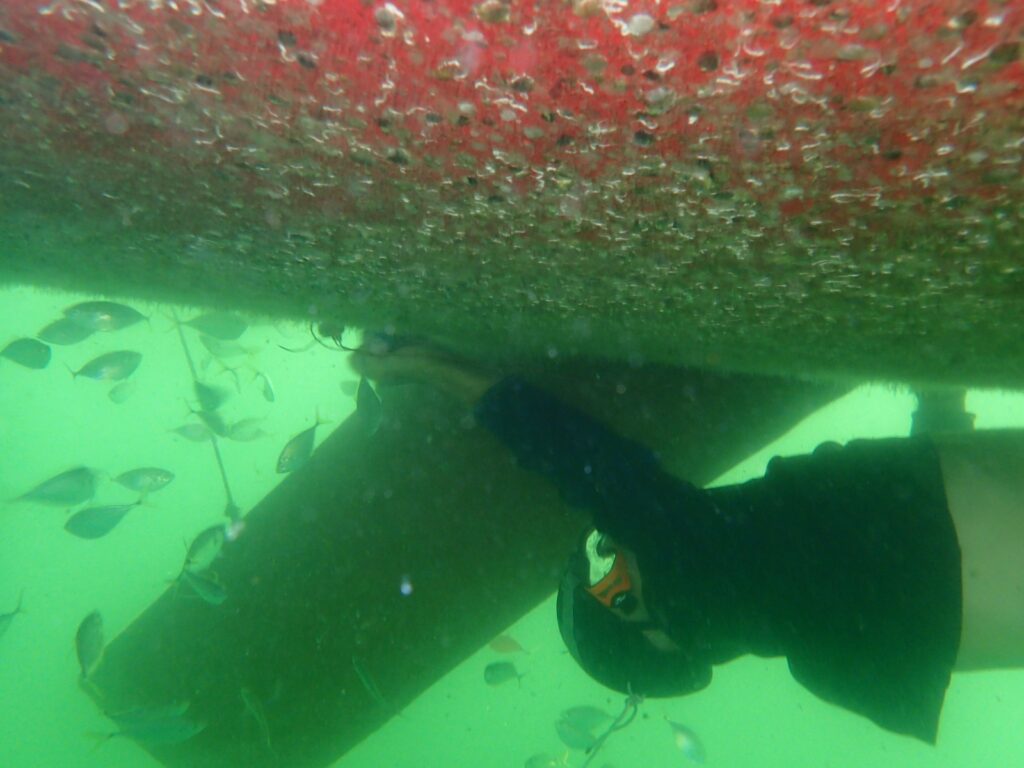
We managed to get most of the barnacles off.
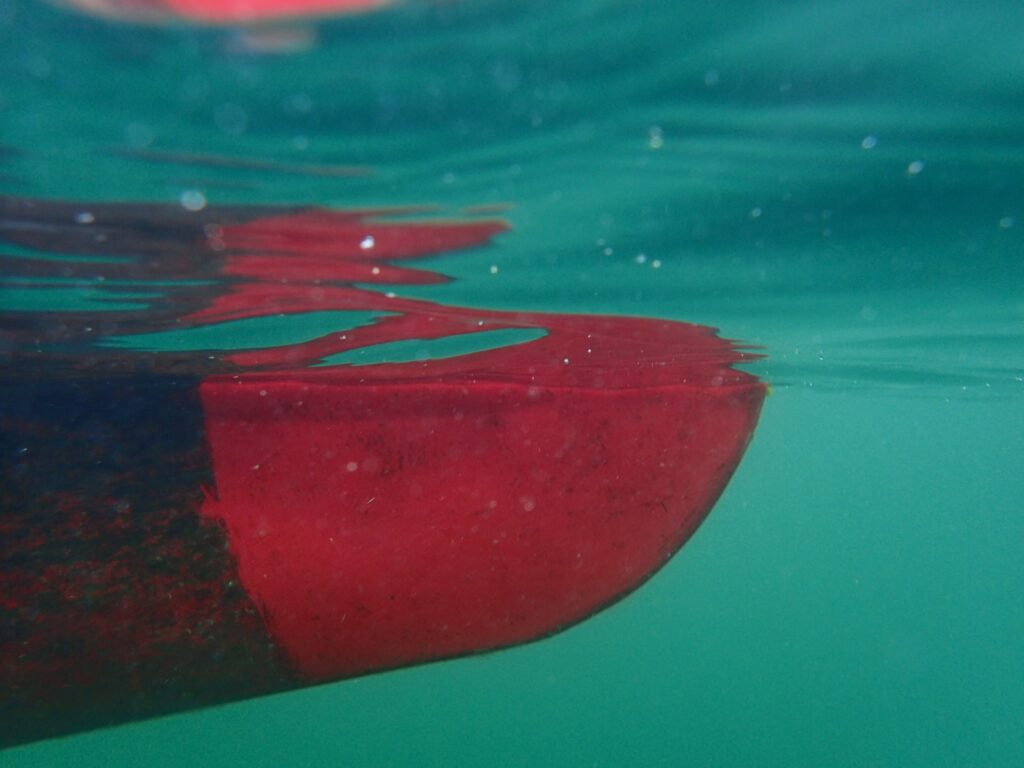
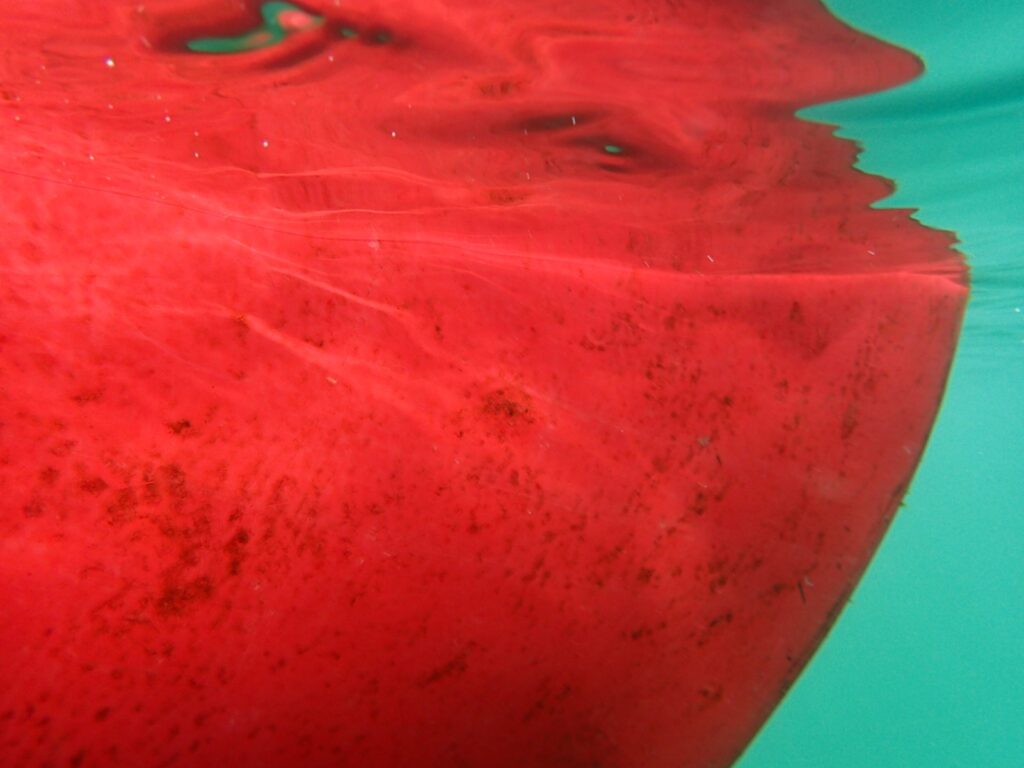
We were happy, especially because it looks like our Biocoat is still working after 2 years of sailing. But, we also found that barnacles look a lot like humans. They thrive at temperatures between 24 and 28 degrees Celcius and they like boats a lot.
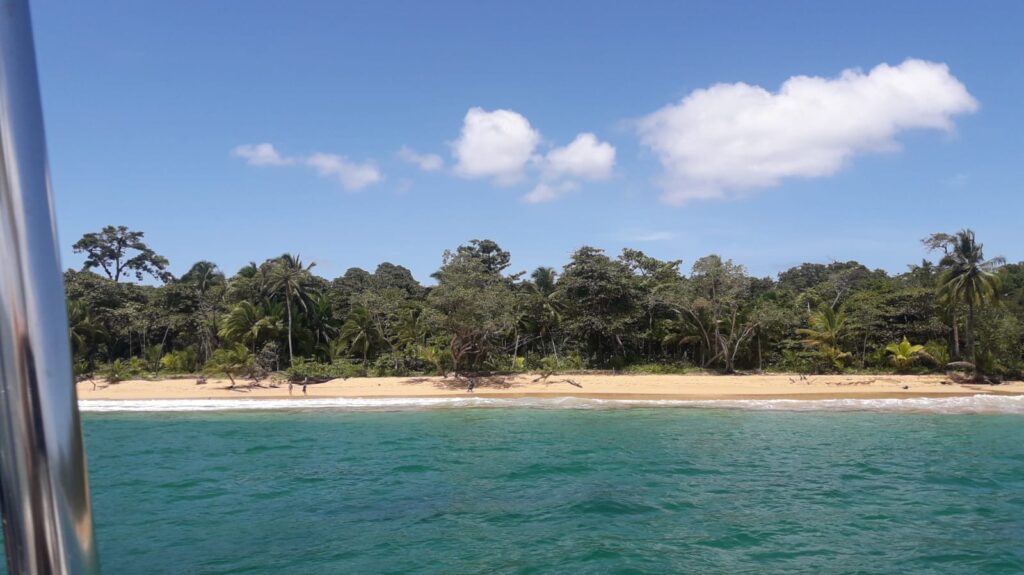
So, to keep out of trouble, keeping our hull free from barnacles is going to be part of our daily routine as long as we are in the Caribbean.
“The ideal of Wasteless World is to become redundant”, says Thomas Wright, “but until we reach that, recycling and upcycling can work wonders”.
Tom started Wasteless World two years ago. Using his private savings and devoting all his time, he set up a warehouse with a workshop here in Bocas del Toro, Panama. He involves the local community, companies and government, and organizes beach clean-ups. His core team now consists of six devoted ‘warriors’.
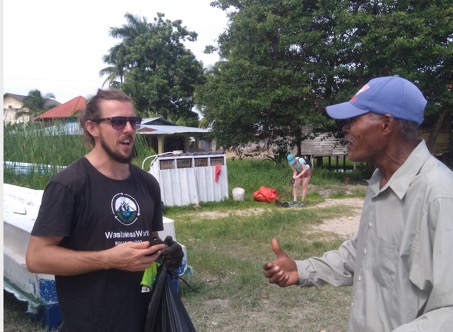
We learned about Wasteless World, since they organized a beach clean up at Carenero. This is the smallest island of the Bocas archipelago. The island is small enough to clean it up by us, 12 people, but big enough to make a positive statement. Our group largely had a western outlook in common, but we were enthusiastically joined by some local children.
Thomas tells: “The reality here, is that we need to create awareness. It is only 15 years ago that they used a part of the beach as the dumping ground for the garbage. Now, the local government is charging the population $ 1,50 per garbage bag and brings it to a landfill.”
With cooperation of the municipality, Wasteless World has put collection stations where you can put plastic, glass and tin cans in. Obviously, this would save on what you throw away in the garbage bag. However, Tom estimates: ”People throw their waste in remote pits, burn it, or throw their waste directly into the environment. Perhaps 5% of the town’s recyclable materials end up here. So, it is still a long way to go.”
With the help of students from the Dutch University of Applied Science ‘Windesheim’, they set up an educational program for the local schools. Then, the next generation will do better on sustainability.
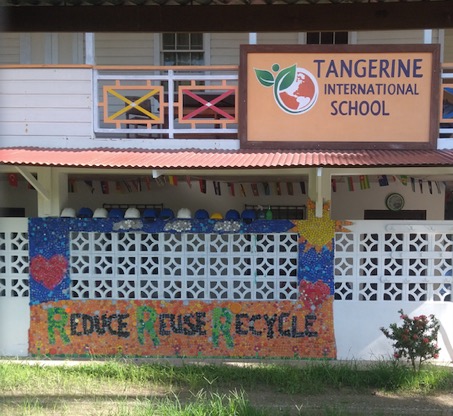
Near the airport, we find the heart of the Wasteless warriors: the warehouse. Here they create products out of waste. You see that most products are smart products, as well as statements showing the value of garbage. Here are some examples.
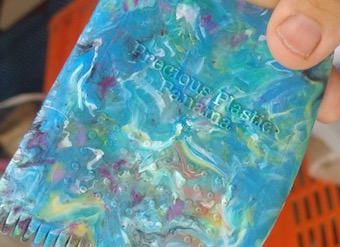
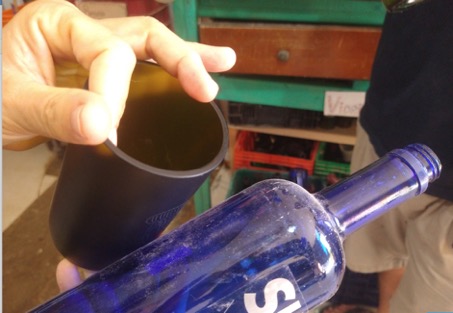
Anyone can bring their recyclable garbage straight to the Center, for free. Talking about money: only 20% comes from donations, mainly from the people from the USA and Europe living here. Seeing their environment deteriorated by the garbage, they were very enthusiastic about the Wasteless World. So, they were happy to donate, to make a next start up possible: the Recycle Centre.
The purpose of the Recycle Centre is to process the mass streams to products, especially plastic and glass.
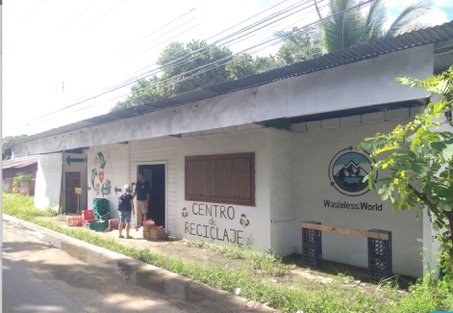
People can bring in their garbage for free here. And much comes from the collection stations. As soon as the recycling station has processed one of the types of waste, they gain in worth.
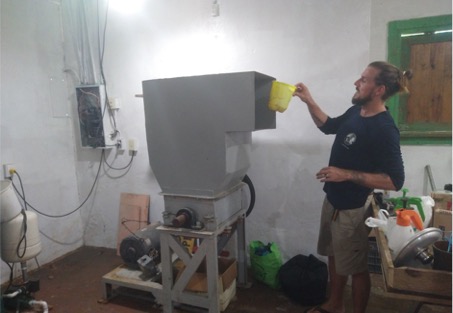
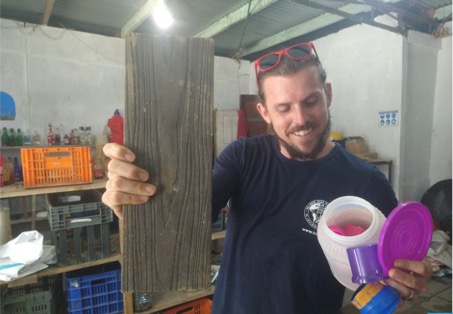
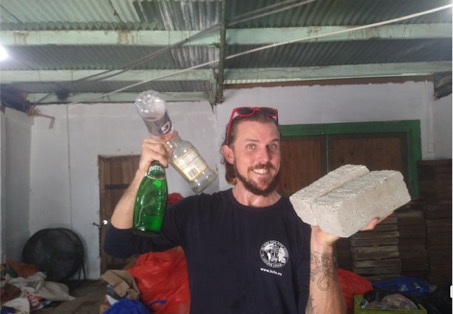
At its start, the Recycling Centre can already employ two local employees, working four days a week. They learn all about the different sorts of glas, and will distinguish polyethene from styrene, PVC, PET LDPE and HDPE, EPS and many more plastics, so they are able to separate the glass, cans, and all plastics, and operate the machines. They create the added value.
“But still, although the outlook is promising,” Thomas emphasizes, “the help of volunteers is necessary, and donations are very welcome.”
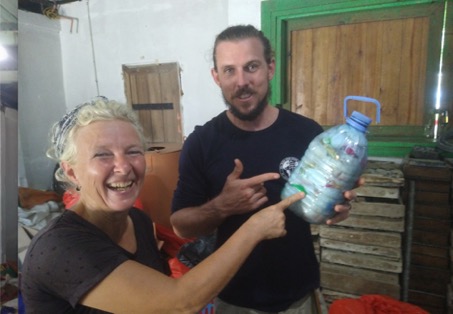
Comments on this article? Email info@fossilfreearoundtheworld.org
Email info@fossilfreearoundtheworld.org
Sail along on ‘Ya’ and discover local sustainable novelties? Email info@fossilfreearoundtheworld.org